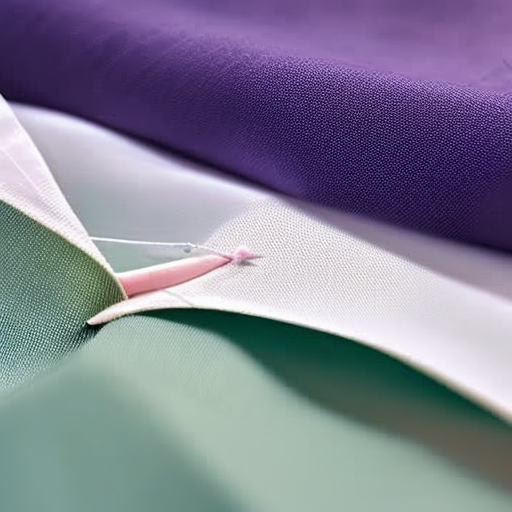Tips for Sewing Stretch Fabric
Working with stretch fabrics can be both exciting and challenging for sewers of all skill levels. Whether you’re making garments or accessories, it’s essential to follow some guidelines to achieve professional-looking results. Here are some valuable tips to help you sew stretch fabric with ease:
1. Use the Right Needle
When sewing stretch fabrics, it’s crucial to select the correct needle. Opt for a ballpoint or stretch needle, as they have rounded tips specifically designed to avoid piercing or snagging the fabric’s fibers. A regular needle may cause the fabric to pucker or create unsightly holes.
2. Use Quality Thread
Choosing the right thread is equally important. Polyester thread is ideal for sewing stretch fabrics due to its excellent stretch and recovery. It can withstand the stretching and pulling that occurs when the fabric is worn or washed, ensuring your stitches stay intact.
3. Use the Stretch Stitch
Most sewing machines offer a stretch stitch option, which is specifically designed for sewing stretch fabrics. This stitch has more give and flexibility, accommodating the fabric’s stretchiness without breaking the seams. Alternatively, you can also use a zigzag stitch if a stretch stitch is not available.
4. Use Stretchable Seams
When stitching stretch fabrics, it’s best to use stretchable seams to ensure the longevity of your project. The simplest stretchable seam is the zigzag stitch, which allows the seams to stretch with the fabric. Another option is the double-needle stitch, also known as a twin needle, which creates parallel rows of stitches on the right side of the fabric while forming a zigzag effect on the wrong side.
5. Test Your Stitching
Before starting your project, it’s a good idea to test your stitching on scrap fabric or a small swatch of the actual fabric. This will allow you to adjust the tension, stitch length, and stitch type as needed to achieve the desired results without risking the integrity of your final piece.
6. Keep the Fabric Taut
Stretch fabrics tend to stretch as you sew, which can lead to inconsistent stitching and puckered seams. To avoid this, gently hold the fabric taut as you guide it through the machine. Be careful not to pull it too tight, as it may cause the fabric to ripple or distort.
7. Use Iron-On Stabilizer
If you’re working with extremely stretchy fabrics that are difficult to handle, consider using iron-on stabilizer to enhance their stability. This will make it easier to cut and sew, giving you more control over the fabric. Be sure to follow the manufacturer’s instructions for the best results.
8. Finish the Raw Edges
Ensure the longevity and quality of your stretch fabric project by finishing the raw edges. You can use an overlock machine, a zigzag stitch, or a serger to prevent fraying and unraveling. Alternatively, you can apply a fabric adhesive or fray check to seal the edges.
9. Practice Patience and Perseverance
Sewing stretch fabric can be challenging at first, requiring patience and perseverance. Don’t get discouraged if things don’t go perfectly right away. With practice, you’ll become more comfortable working with these fabrics, and your sewing skills will improve.
Remember, practice makes perfect!
By following these tips and techniques, you’ll be well on your way to mastering the art of sewing stretch fabrics. Embrace the versatility and comfort that stretch fabrics offer and create beautiful projects that both look great and feel amazing.




